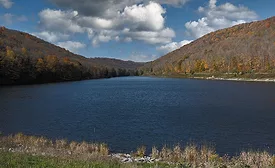Home » water
Articles Tagged with ''water''
Water Treatment
This high-level panel of experts discussed water problems and how to solve them
Read More
Manufacturing News
“Regenerative” is Key to Agriculture/Water Sustainability
August 25, 2021
Water Treatment
Treat water as the most critical—and potentially expensive—ingredient you use
While water may not be in short supply in your area, that’s not to say that shortages can’t occur almost over night
April 16, 2021
Engineering R&D
A novel way to clean wastewater streams
Living bacteria gobble up waste and turn it into water and electricity
March 29, 2021
Engineering R&D
Real-time water quality metrics help beverage processors guard their most important resource
Whether it's "mountain spring water" or tap water, it's the most important ingredient in your beverage—so keep its quality consistent in real time
December 22, 2020
Editor's Note
It’s been a strange year, but we have to find ways to be sustainable
Think about managing water, energy and waste in new ways
October 30, 2020
How two industry leaders invest to save the water supply as scarcity grows
Kraft Heinz and Nestlé Waters North America sustainability leaders say protection of the lifeblood resource will require looking outside the factory walls
October 28, 2020
Dry Processing
Whiskey distiller uses centrifugal sifter to recover liquid sour mash
With Kason sifter, Bendt Distilling turns spent grain byproduct into saleable livestock feed
September 22, 2020
Water Management
Nestlé Waters earns top water stewardship rating
California bottled water plant is first food and beverage operation to achieve the certification
September 3, 2020
Regulatory Watch
FDA seeks treatments for pre-harvest agriculture water
Companies can follow the agency’s testing protocol to find out if products inactivate pathogens
August 12, 2020
Elevate your expertise in food engineering with unparalleled insights and connections.
Get the latest industry updates tailored your way.
JOIN TODAY!Copyright ©2025. All Rights Reserved BNP Media.
Design, CMS, Hosting & Web Development :: ePublishing












